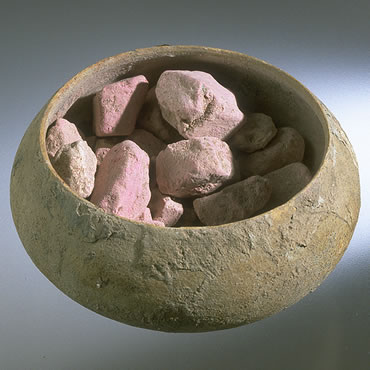5. Colored earth pigments

The frescoes that adorned homes in Pompeii owe much of their success to the plaster, carefully prepared with great skill. Perfectly smooth and adherent to the underlying wall, with a high mechanical resistance, they offered the decorator an opportunity to express his art to the utmost.
The pigments found in Pompeii were contained in clay cups, in powdered form and divided by color: laboratory analyses have made it possible to identify white, green, blue, and red earth pigments.
The basic colours of Pompeian painting were made with natural clays imported from various countries. The colours most used were white, red, blue, yellow and green. The clays that produced the white of Paraetonium came from Egypt, while the Ephesus Valley provided cinnabar, the source of red vermilion. Much sought after was the green clay of Smyrna.
Other colours were produced by mixing or treating with heat the natural clays. The most used were black, called atramentum, pale-blue, and the Egyptian blue produced at Pozzuoli.

